包阅导读总结
1. 关键词:AI 代理、LangChain、LlamaIndex、技术峰会、生产应用
2. 总结:本文主要围绕在旧金山举行的 AI 工程师世界博览会上 LangChain 和 LlamaIndex 对 AI 代理的探讨。包括对过去 AI 代理发展的回顾、两家公司各自的技术方案及特点,最后指出其效果有待观察。
3. 主要内容:
– AI 代理受关注:在 AI 工程师世界博览会上,AI 代理是焦点,此前 AutoGPT 曾受热议但存在问题。
– LangChain 的观点:创始人 Harrison Chase 认为 AutoGPT 是炒作高峰,OpenAI 的 Assistants API 是转折点,LangChain 发布了 LangGraph 用于代理,具有可控性和支持“人类在环”等特点,还推出了 LangGraph Cloud 产品。
– LlamaIndex 的方案:创作者 Jerry Liu 认为代理是 RAG 的自然继承者,将其重命名为“知识助手”,为用户提供复杂选项以构建更高级代理,还推出 Llama Agents 新功能。
– 效果有待观察:LangChain 和 LlamaIndex 提供的解决方案效果未知,需后续观察。
思维导图: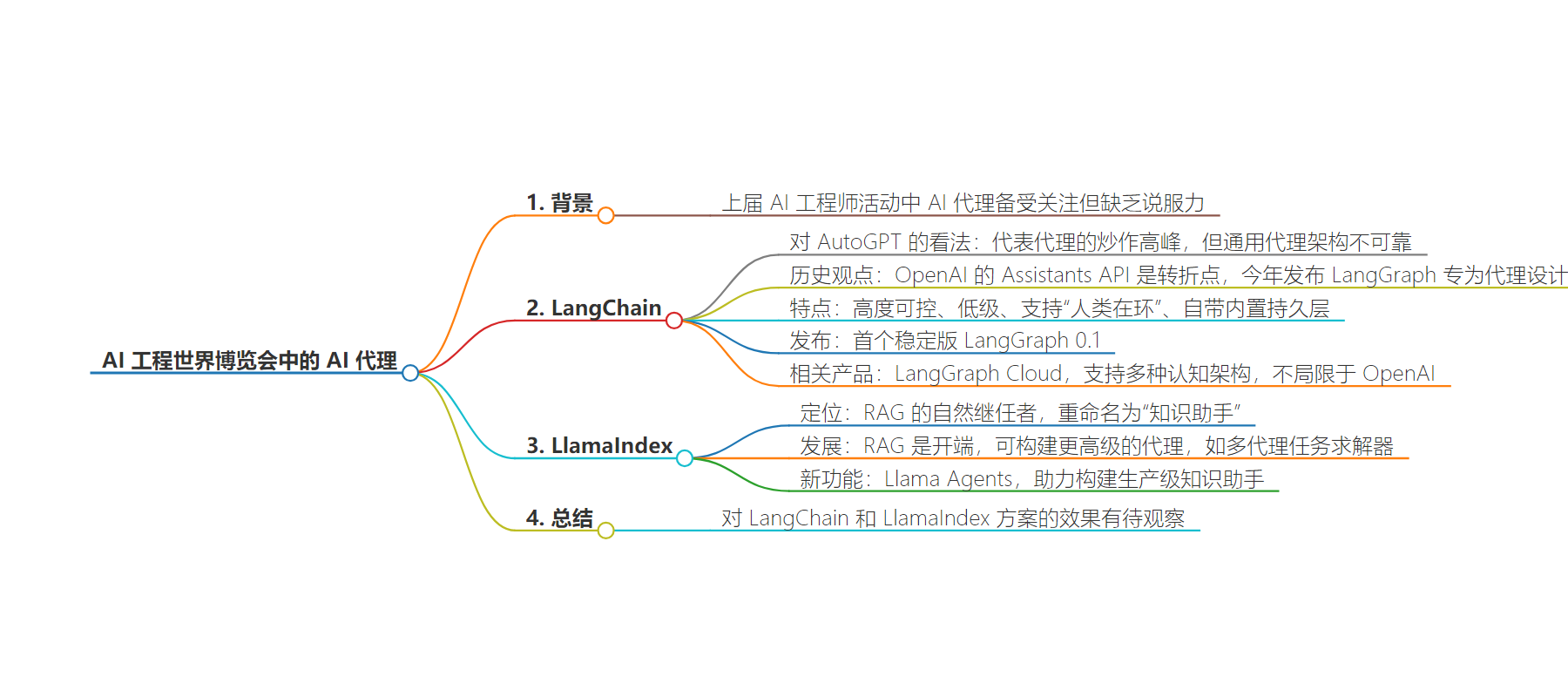
文章地址:https://thenewstack.io/lets-get-agentic-langchain-and-llamaindex-talk-ai-agents/
文章来源:thenewstack.io
作者:Richard MacManus
发布时间:2024/7/2 13:47
语言:英文
总字数:1090字
预计阅读时间:5分钟
评分:81分
标签:人工智能,数据,软件开发
以下为原文内容
本内容来源于用户推荐转载,旨在分享知识与观点,如有侵权请联系删除 联系邮箱 media@ilingban.com
The phrase “agentic systems” (or “agentic workflows”) popped up more than a few times at last week’s AI Engineer World’s Fair, held in San Francisco. AI agents were the focus of two leading AI engineering startups: LangChain and LlamaIndex, each of which offered their own spin on the technology in presentations.
The term “agent” in the AI landscape refers to an automated piece of software that uses large language models (LLMs) for various tasks. But when I attended the first AI Engineer event last October, when it was known as the AI Engineer Summit, I felt that AI agents were the most hyped — and least convincing — aspect of that event. AutoGPT was the hottest agent startup at the time (and a lead sponsor of the October event), but its presentation left me highly skeptical.
LangChain
At the World’s Fair, AutoGPT didn’t appear to be among the sponsors, but it was mentioned by Harrison Chase, the founder and CEO of LangChain. In a quickfire presentation on the topic of agents, Chase began by pouring cold water on the 2023 hype of agents.
“To me, AutoGPT represents the peak of hype in agents,” he told the World’s Fair audience. “And I actually think for a few months after that, there was a bit of a fall-off in interest as people realized that the generic agent architecture wasn’t reliable enough to build systems to ship to production.”
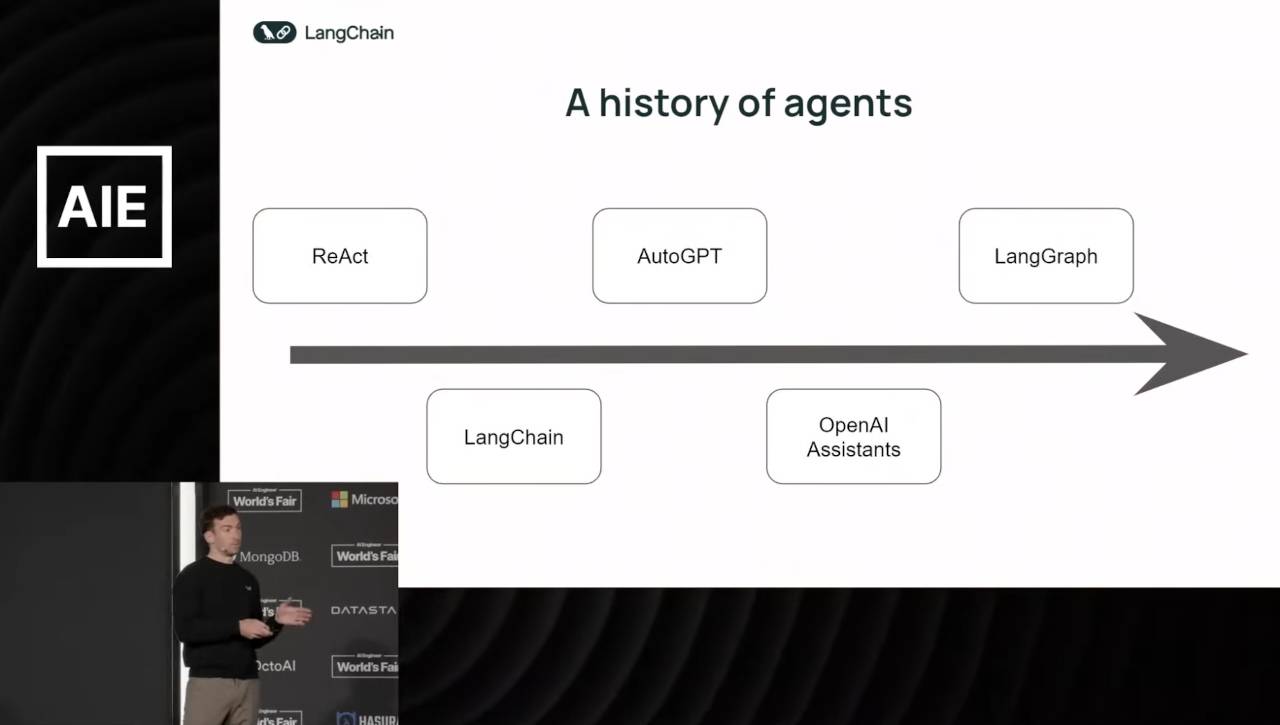
The history of agents according to LangChain
He mentioned OpenAI’s Assistants API as a turning point for agents. Then, earlier this year, LangChain released LangGraph, which Chase described as “purpose-built for agents.” He noted that LangGraph is designed to be “highly controllable and low level.”
“Companies that were shipping agents to production were building custom cognitive architectures, encoding little differences in how they wanted their agents to behave,” he explained. But this wasn’t something the “generic agent” systems could deliver.
Another criticism I had of agents back in October was that they seemed to want to take humans out of the equation — which I thought was hubristic. Chase struck a much more modest tone and even listed “human in the loop” as one of the defining features of LangGraph.
LangGraph “comes with a built-in persistence layer,” he said, “which enables a lot of really cool ‘human in the loop’ interaction patterns.”
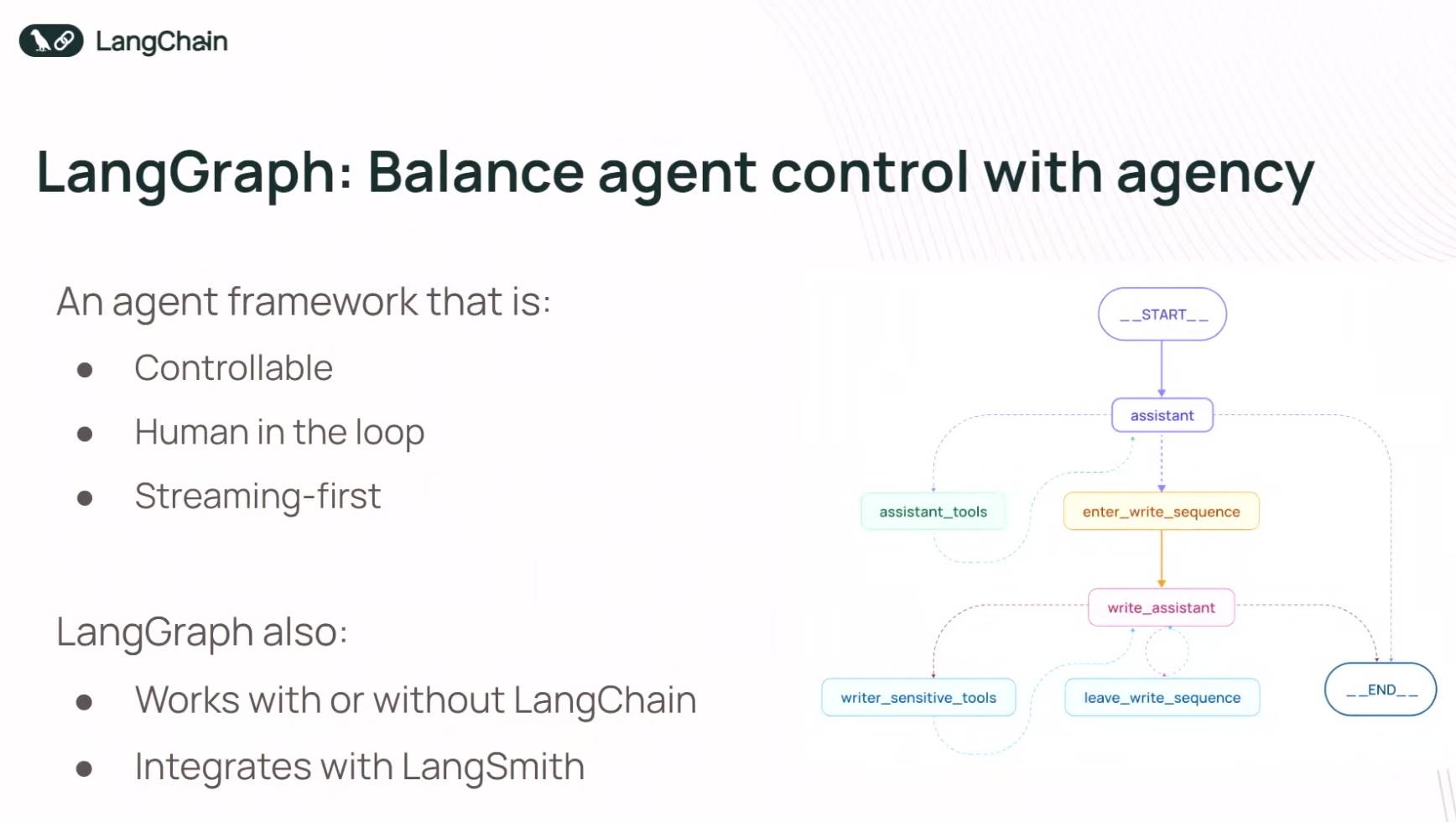
LangGraph details
Chase announced on-stage that it was releasing “the first stable version of LangGraph” — version 0.1 according to a graphic — which he said reaffirmed its “commitment to building an agent architecture that allows you to build the custom cognitive architectures that are necessary for bringing agents to production.”
He then circled back to the OpenAI Assistants API, which he said was a good agents platform, although it had some flaws. “It came with a specific state that it expected your application to have, a list of messages, and it was a little bit rigid and didn’t let you easily do other things besides that,” he said.
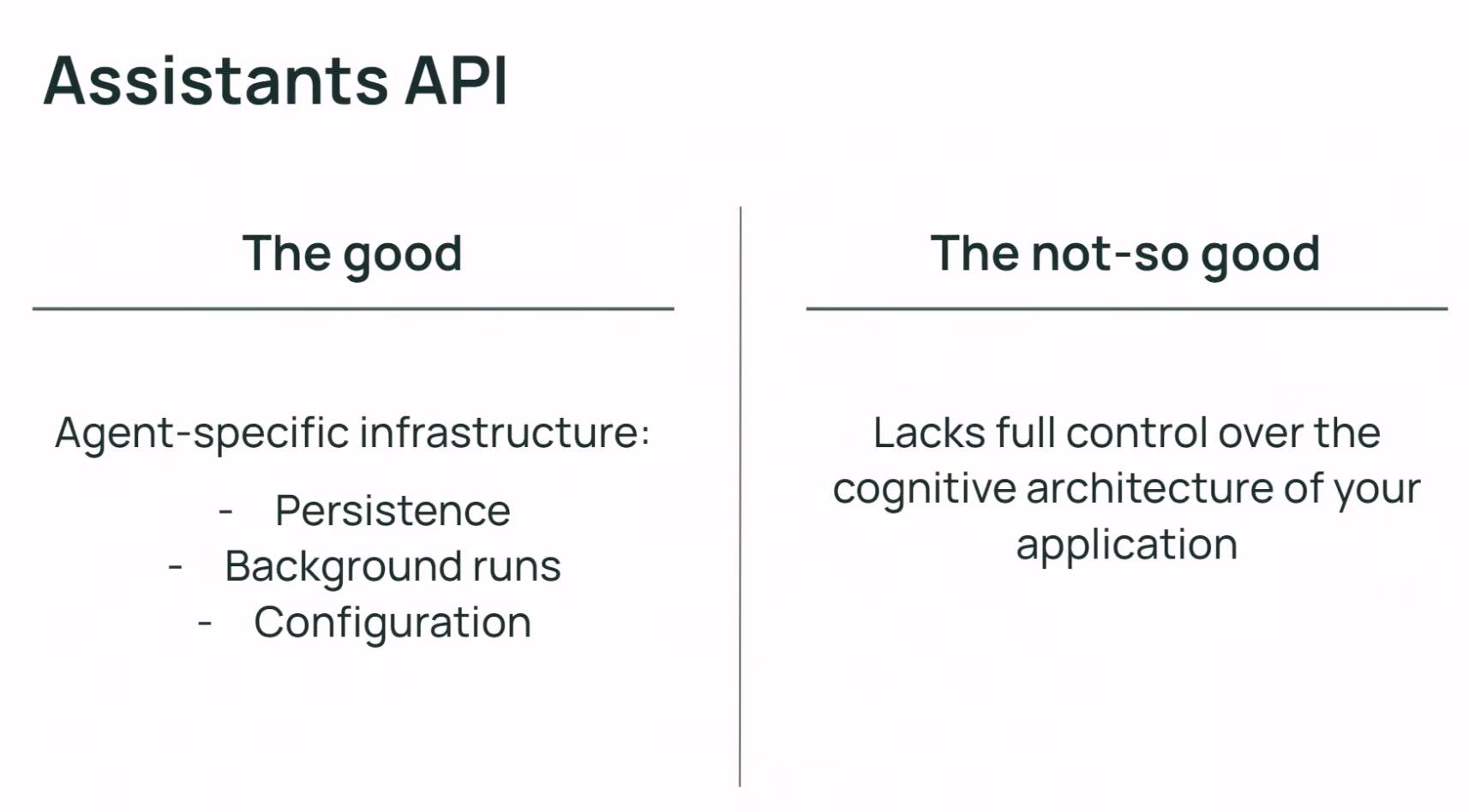
OpenAI Assistants API (according to LangChain)
This led LangChain to develop a SaaS product for LangGraph, simply called LangGraph Cloud. It offers “1-click deployment, scalable servers and task queues, and integrated monitoring” for agents.
He added that another benefit of LangGraph Cloud is that “it’s not bound to OpenAI, and it supports any cognitive architecture that you can build with LangGraph.”
LlamaIndex
Another approach to AI agents was offered by LlamaIndex creator Jerry Liu, in a separate presentation at the World’s Fair. He pitched agents as the natural successor to RAG (Retrieval-Augmented Generation), which has — up till now — been the most common method of integrating a pre-trained LLM with an external data source.
“If you’ve followed our Twitter for the past year or so, basically we’ve talked about RAG probably 75% of the time,” he said, adding that it’s become common to “not only do a one-shot querying search but actually store your conversation history over time.”
But this year, continued Lio, “a lot of people are excited about building agentic workflows that can not only synthesize information but actually perform actions and interact with a lot of services to basically get you back the thing that you need.”
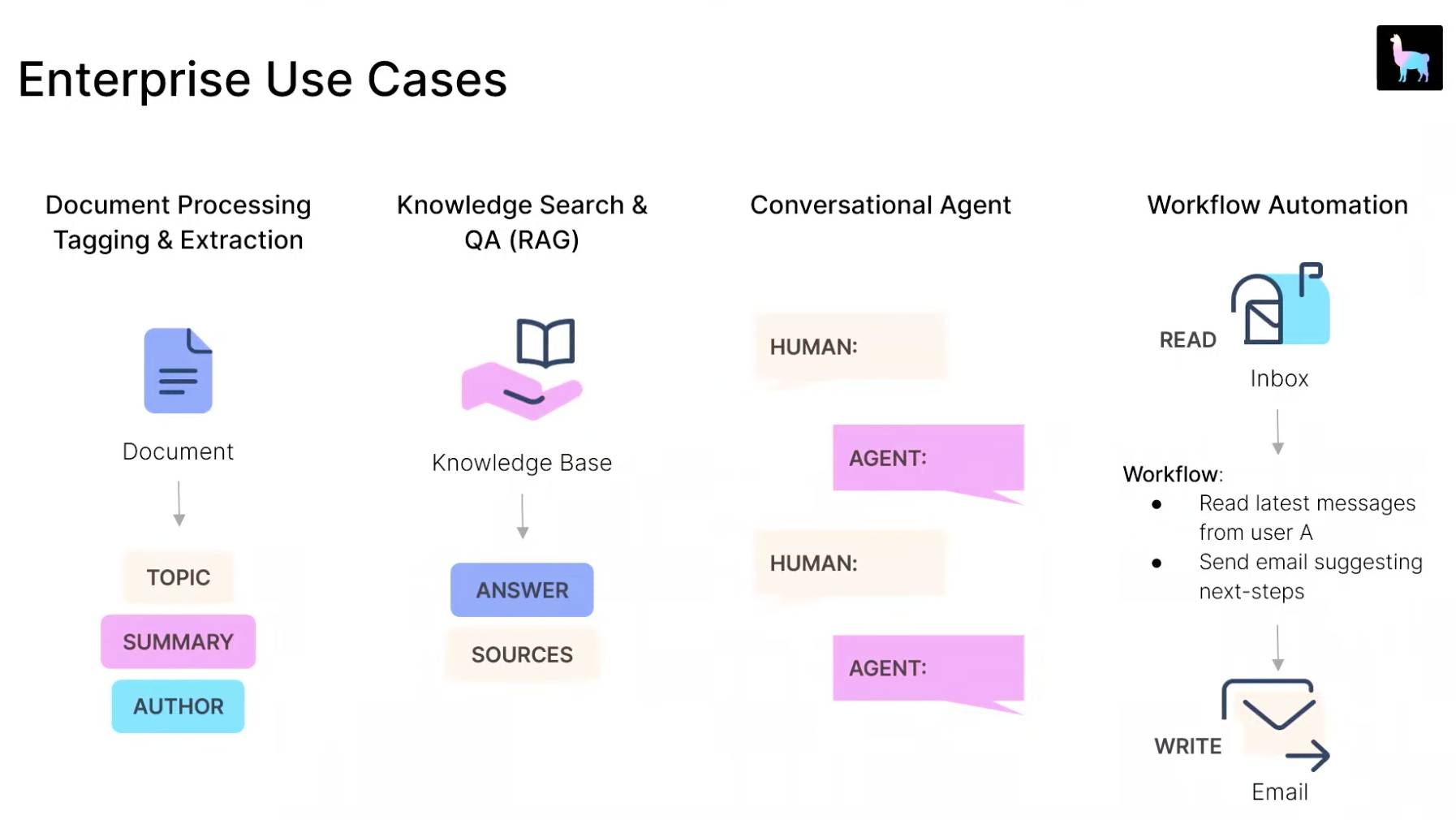
The shift from RAG Q&A to “agentic workflows”
LlamaIndex has wisely decided to rebrand AI agents into something less sinister-sounding for enterprises: they’re calling them “knowledge assistants.”
RAG “was just the beginning” of its goal to build knowledge assistants, said Liu. He characterized RAG as “a glorified search system on top of some retrieval methods that have been around for decades.”
Liu went on to explain a rather complex set of options for LlamaIndex users, but the overall gist was that users can build more advanced agents with techniques that go beyond RAG. Users can even build “a general multi-agent task solver,” he said, “where you extend beyond even the capabilities of a single agent towards multi-agent orchestration.”
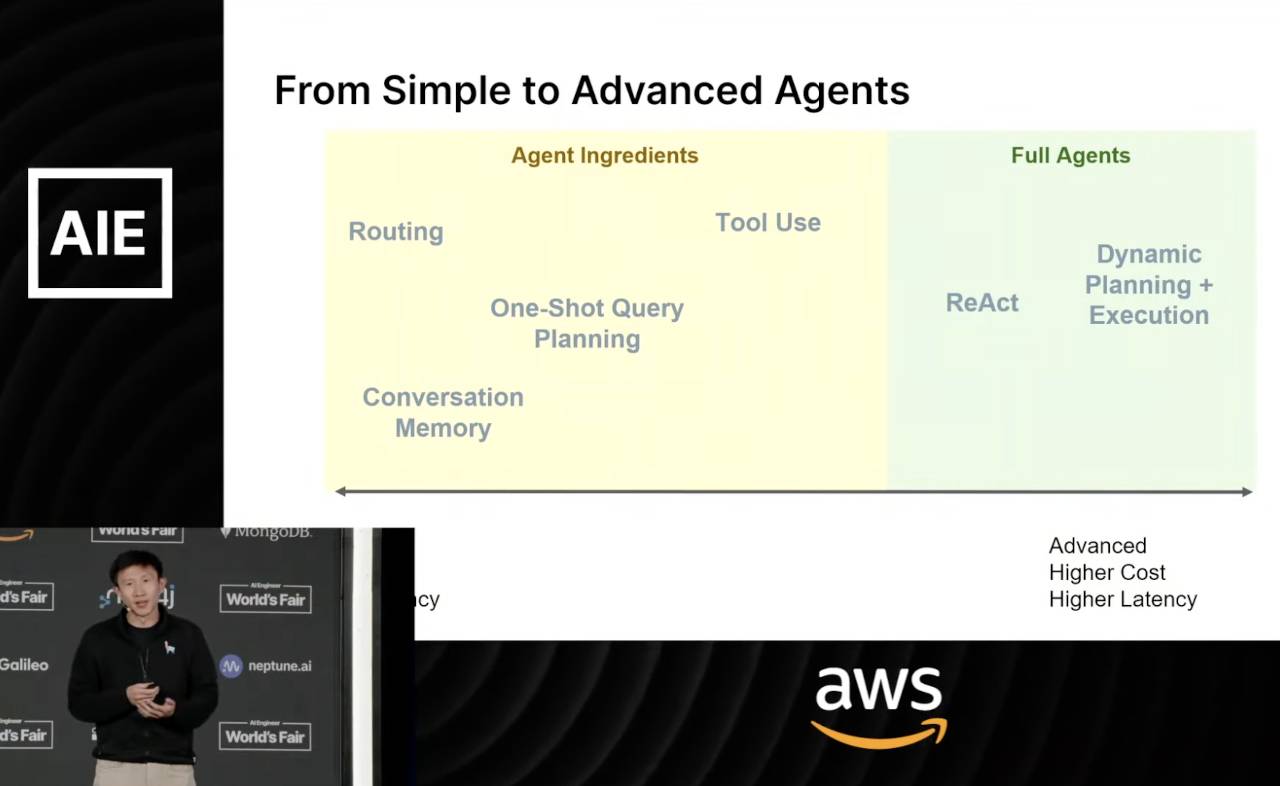
From simple to advanced agents
Having seemingly coined “knowledge assistants” to make it easier for enterprises to understand the concept of AI agents, Liu then tried to explain the concept of “agentic RAG,” which rather over-complicated matters again.
“Not only are you just directly feeding the query to a vector database,” Lui said about agentic RAG, “in the end, everything is just an LLM interacting with a set of data services as tools, right?”
Erm, right.
Provided it all works, Liu said that this process results in more advanced agents — such as “personalized QA systems,” agents that can maintain user state over time, and agents that are able to look up information from both unstructured and structured data sources.
To wrap it up, Liu announced a new feature of LlamaIndex, called (you guessed it): Llama Agents. “We see this as a key ingredient in helping you build something that’s production-grade — a production-grade knowledge assistant — especially, you know, as the world gets more agentic over time,” said Liu.
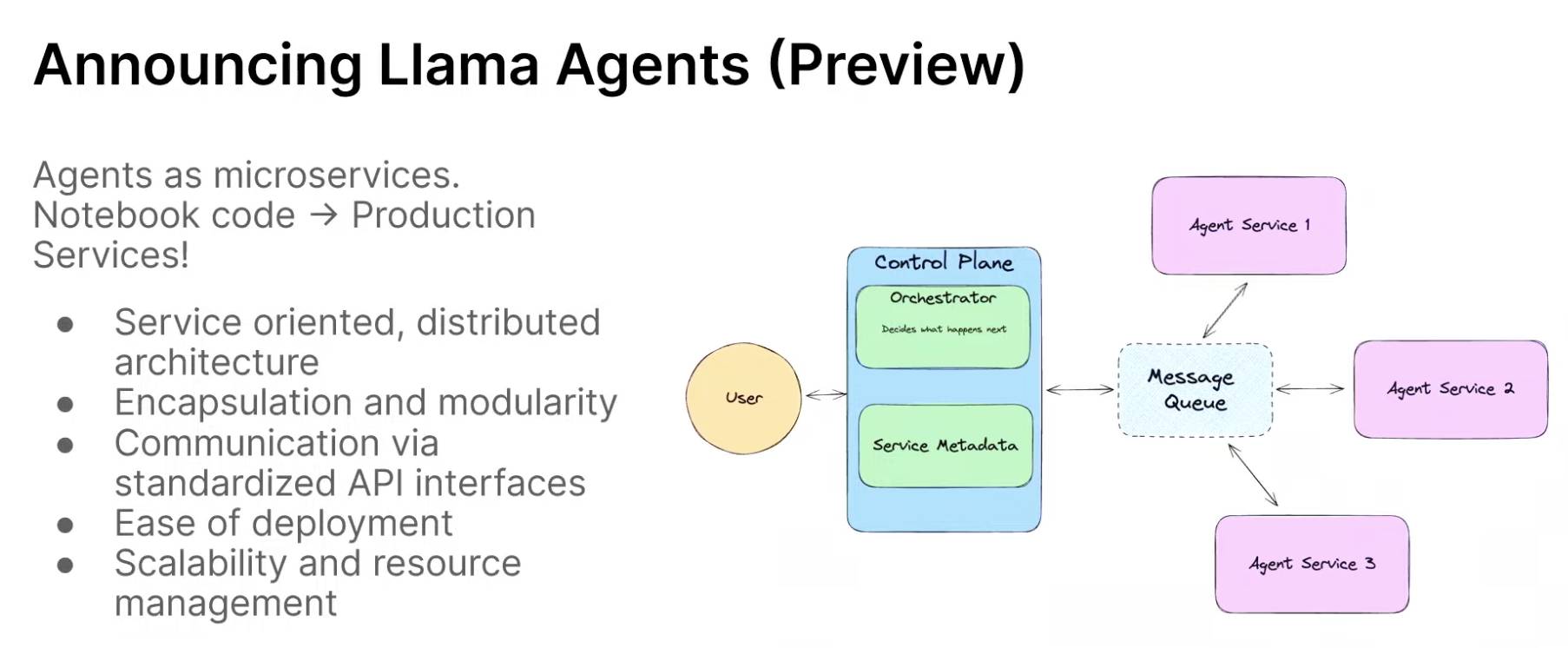
Llama Agents preview
Agentic World
Harrison Chase had begun his presentation with an apparent diss of last year’s AI agents sensation, AutoGPT. But of course, it remains to be seen whether the solutions provided by LangChain and LlamaIndex fare any better.
LangChain’s solution has a complicated catchphrase (“custom cognitive architectures”), but seems simpler than LlamaIndex, which has a simple catchphrase (“knowledge assistants”) but a complicated workflow. But check back in a year to see if either of them works in the wild.
YOUTUBE.COM/THENEWSTACK
Tech moves fast, don’t miss an episode. Subscribe to our YouTubechannel to stream all our podcasts, interviews, demos, and more.
